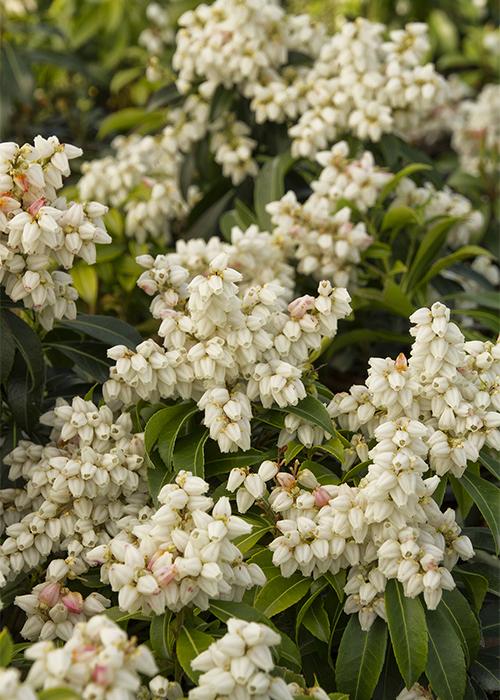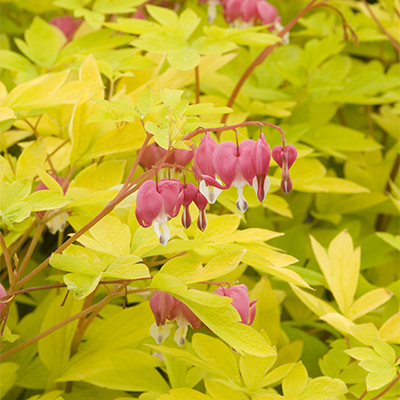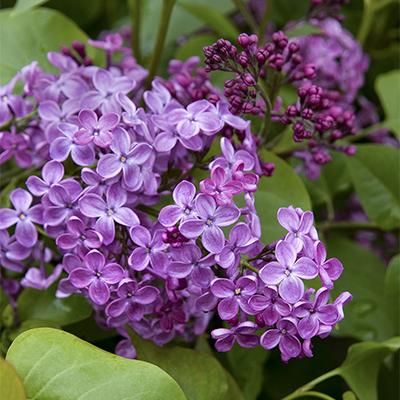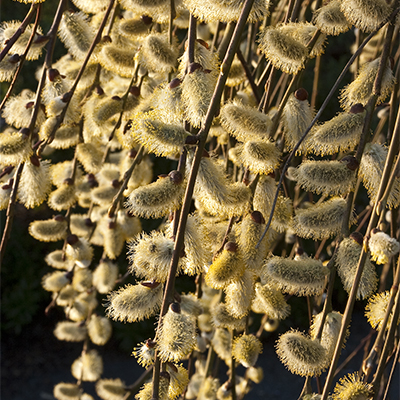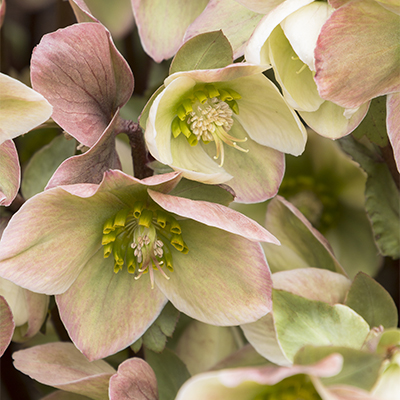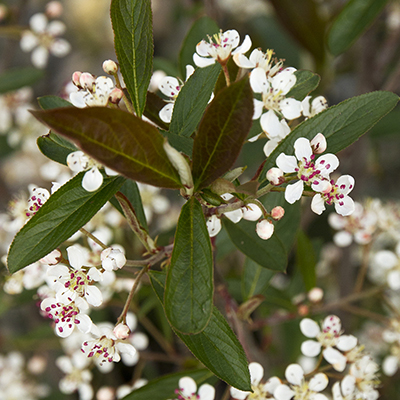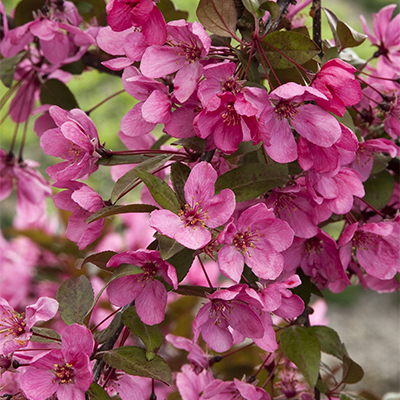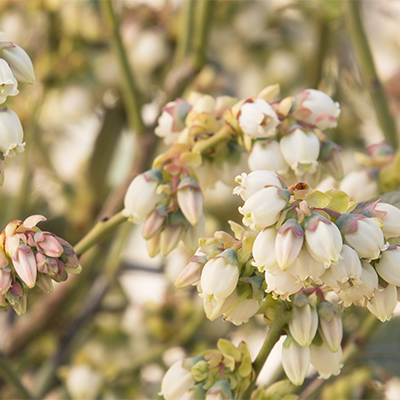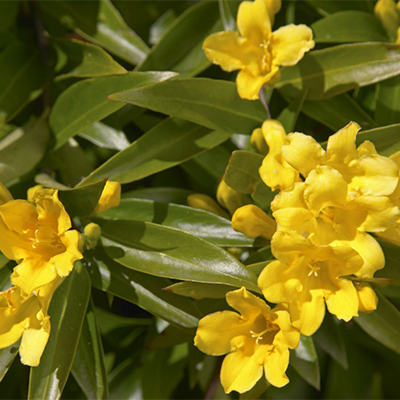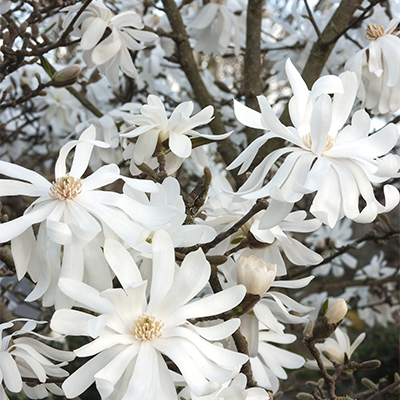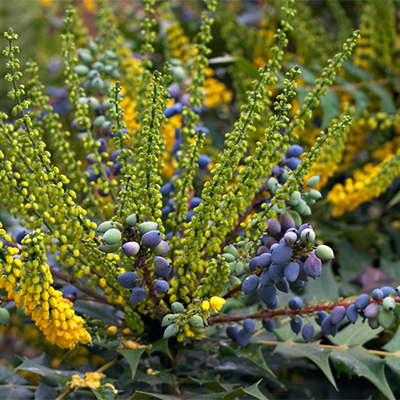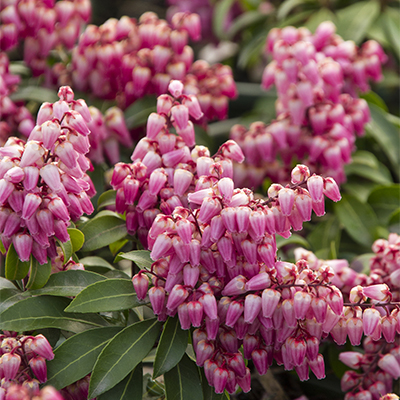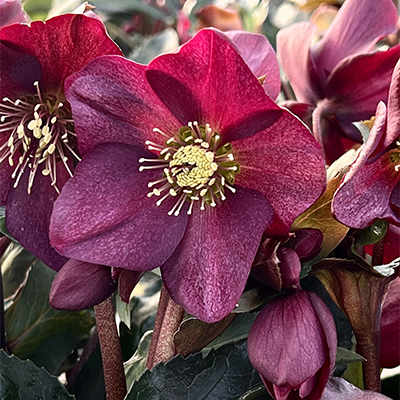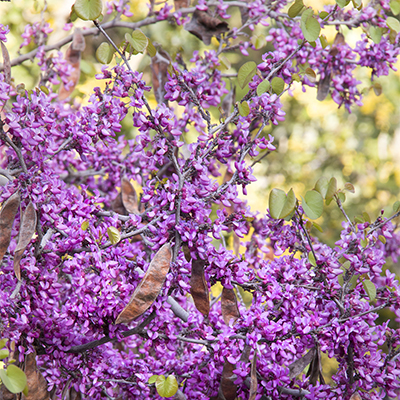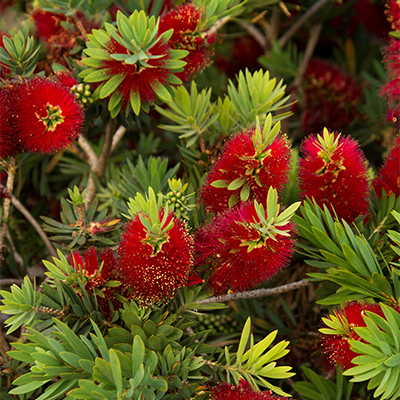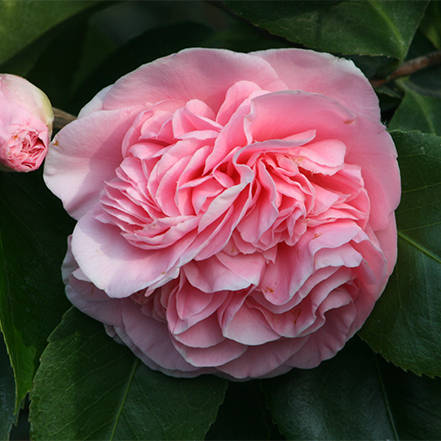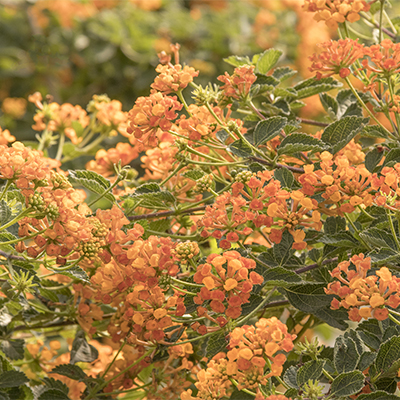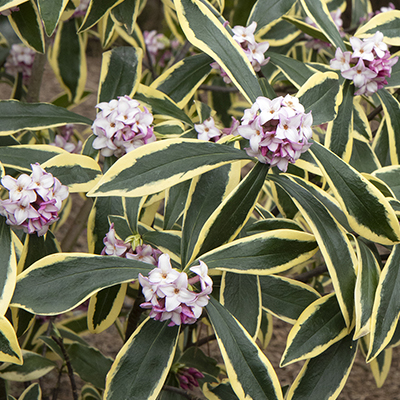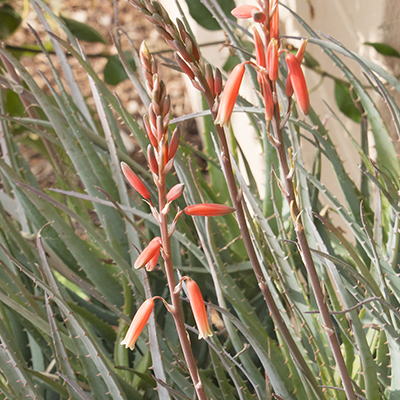(Above) Bees love the profusion of late-winter and early-spring flowers on Pieris shrubs, like this Enchanted Forest® River Nymph™ variety, which is covered in white blooms. Flowers bud in late winter and open in very early spring. Up to 6' tall and wide. Zones 6-8.
These are just a small selection of plants that are valuable sources of early-season nectar. Please consult with your local garden center for even more great options. Plants here are divided by groups of regions but do know that as plant zones often overlap, it’s a good idea to look at all options here.
Note that “early spring” is a relative term and depends on when spring comes to your region. Questions? Please do ask in the comments or tag us on social media @MonroviaPlants!
Early Spring Flowers for Zones 3-7
Gold Heart
Bleeding Heart
Very early food source with heart-shaped pink flowers that dangle from long wands. Perfect for woodland gardens and under larger shade trees. Up to 36" tall, 24" wide. Zones 3-9
Pocahontas
Canadian Lilac
An extremely cold-hardy and early-blooming variety with deep maroon-purple buds that open to deep violet blooms about a week earlier than typical lilac varieties. Up to 10' tall and wide. Zones 2–7.
Kilmarnock
Willow
Catkins (the flowers of willows) smothered in pollen and laden with nectar are a big draw for pollinators such as bees. Small tree, up to 8′ tall, 6′ wide. Zones 4-8.
Ivory Prince
Hellebore
Virtually problem-free, this delightful cool-season bloomer with upward-facing blooms graces the dappled shade of woodland gardens. Up to 12" tall and wide, spreading wider over time. Zones 4-9.
Brilliant Red
Chokeberry
An improved, compact selection with brilliant red fall foliage and glossy red fruit. Abundant flowers offer reliable nectar to bees in spring. Up to 8' tall and wide. Zones 4-9.
Prairifire
Crabapple
Bees love crabapple blossoms, and this outstanding early bloomer looks gorgeous in the garden with an upright form, dark pink flowers, and reddish new foliage. Up to 20′ tall and wide. Partial to full sun. Zones 4-8.
Early Spring Flowers for Zones 6-8
Bountiful Blue®
Blueberry
Blueberries are the gift that keeps on giving! Early spring flowers are a big draw for pollinators including returning butterflies. Up to 4′ tall and wide. Zones 6-10.
Carolina
Jessamine
Native to the Southeast, this early flowering, fragrant, well-mannered, vining plant is a favorite of native bees that have evolved with it. Climbs 20' tall with support. Zones 7-9.
Royal Star
Magnolia
Magnolias are associated with beetle pollinators, but that doesn’t mean the bees will pass them by! Perfect for smaller spaces. Up to 15′ tall, 12′ wide. Zones 4-9.
Charity
Mahonia
Winter-active bees and some hoverflies seek out this nectar-rich (their primary carbohydrate) very early bloomer. Up to 10′ tall and wide. Zones 7-9.
Enchanted Forest®
Impish Elf™ Pieris
The dark purple-pink buds offer winter color, and open to bright-pink flowers that are an important food source for mason bees, which typically emerge in early spring. Up to 5′ tall and wide. Zones 6-8.
Ice N' Roses®
Red Hellebore
Spectacular hybrid hellebore with outward and upward-facing flowers. Just-waking-up insects and bees flock to this very early bloomer. Up to 22" tall, 24" wide. Zones 5-9.
Early Spring Flowers Zones 9-11
Claremont
Western Redbud
Redbuds are loved by hummingbirds, bees, butterflies, and other native pollinators. This has dark pink flowers in late winter to early spring. Up to 20′ wide, 15′ tall. Zones 6-9.
Little John
Dwarf Bottlebrush
Nectar-rich, red bottlebrush-like flower spikes cover this dwarf evergreen shrub from spring into summer and continue to bloom through the year in warmer regions. Up to 3' tall, 5' wide. Zones 8-11.
Tangerine™
Spreading Lantana
Bees, butterflies, pollinating insects–everyone love the tiny flowers that bloom all year in mild climates. Bright-orange flowers are butterfly magnets. Up to 3' tall, 8' wide when grown as a perennial. Zones 9-11 (grow as an annual in all zones).
Moonlight Parfait®
Winter Daphne
Pollinators love to snack on the sweetly fragrant flowers that open in late winter. Plant where you can enjoy the show. Up to 4′ tall and wide. Zones 6-9.
Blue Elf
Aloe
Aloes are typically pollinated by birds, but that doesn’t mean bees and insects will take a pass. This is compact, heat, and drought tolerant. Zones 9-11.
Tips for Attracting Pollinators
By offering plants that flower from early spring until the first hard frost, your garden can help to provide nutrients for the entire life cycle of bumblebees and other pollinators. Remember, no garden is too small to help create habitat for pollinators. Combine your space with those other gardens around you and it all adds up!
Here are a few tips for attracting pollinators:
- Determine which pollinator-friendly plants are appropriate for your region. You can use the filters on the My Plantfinder tool to find plants that work in your conditions.
- Plant lots of them. Make sure there are at least 3 x 3 feet of each plant species. These can be planted together or in other areas of the garden.
- Limit your use of chemicals (both synthetic and organic) and use plenty of compost and mulch to build healthy soil. Healthy soils create healthy plants.
- Plan your garden so that there is something blooming for as many months as you can manage. Many pollinators, especially bees, forage during the entire growing season.
- Provide shelter by letting your yard get a little wild. Allow a hedge to grow untrimmed, leave a section of lawn unmowed, pile up grass cutting in a sunny spot, and create a nesting habitat by leaving some soil bare for ground-nesting bees.




